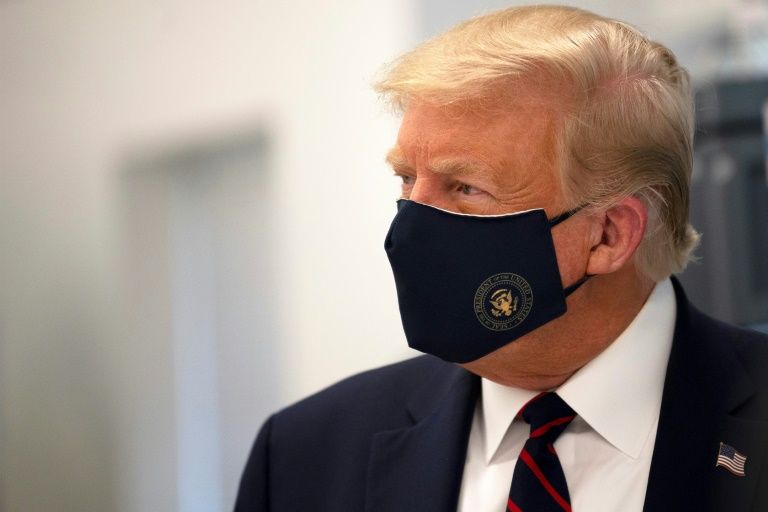Trump tests positive for coronavirus, upending campaign schedule
Washington (AFP) – US President Donald Trump said Friday he had tested positive for Covid-19 and would quarantine inside the White House during his recovery, cancelling upcoming appearances on the campaign trail ahead of a bitterly fought election.
The White House doctor said both Trump and First Lady Melania — who also tested positive — were well and that Trump would continue his presidential “duties without disruption”.
The two were tested after a close White House aide Hope Hicks had tested positive earlier in the day, with the bombshell news breaking as more restrictions loomed in Europe in an attempt to contain the deadly pandemic.
Hicks was on board Air Force One with the president as he traveled to Cleveland, Ohio for the first presidential debate with his rival, Democrat Joe Biden, on Tuesday.
The president routinely receives tests for Covid-19, though the exact frequency is not clear.
US futures trading saw the Dow slump 1.7 percent on the news and the broader S&P 500 shed 1.6 percent, while the safe-haven yen rose against the dollar.
– Restrictions in Europe –
Meanwhile, French authorities warned that Paris could be put on maximum alert to halt the spread of the virus, and Spain extended drastic restrictions across its capital Madrid.
By 2000 GMT Thursday the pandemic had killed at least 1,019,267 people around the world and infected over 34 million, according to an AFP tally based on official sources.
French authorities said they may place Paris on maximum virus alert as soon as Monday, potentially requiring all bars to close as the number of cases surges.
“We’re in a phase where the situation is worsening,” Health Minister Olivier Veran said.
Spain, fighting a second wave of the virus, also extended drastic restrictions across its capital, despite fierce opposition from Madrid’s regional authorities, and most other regions have agreed to tighten curbs in areas of rapid contagion.
In Britain, chief scientific adviser Patrick Vallance told reporters “things are definitely heading in the wrong direction” as the government extended lockdowns to several towns in northern England, effectively putting more than a quarter of the country under tighter restrictions.
And the Slovak and Czech governments both decided to impose states of emergency to allow them to take quick decisions in the face of considerable upticks in infections and deaths.
– China ‘unwinding’ –
On the other side of the globe in China, where the outbreak began late last year, the Golden Week holiday marking the 1949 founding of the People’s Republic has taken on added significance this year.
“People are travelling with a vengeance!” said Huo Binxing, a banker from Beijing who was heading to Lhasa in Tibet. “It’s our first chance to unwind after such a stressful period.”
Also spreading their wings were travelers to South Africa, where a first batch of regional and international flights landed Thursday after a more than six-month shutdown.
While it reopened its borders to all African countries, South Africa is barring tourists from around 50 nations with high infection rates, including Britain, France, India, Russia and the US.
The skies were far less bright in the United States, where American and United airlines announced they would begin furloughing 19,000 and 13,000 workers respectively as US officials have failed to reach a deal on fresh aid.
– Trump’s misinformation –
A study from Cornell University in the United States, meanwhile, said that Trump has been the world’s biggest driver of misinformation during the pandemic.
Evaluating 38 million articles published by English-language, traditional media worldwide between January 1 and May 26 of this year, a team identified 522,472 news articles that reproduced or amplified misinformation related to the pandemic.
The most popular topic was “miracle cures” that appeared in 295,351 articles. The authors found comments by Trump drove major spikes in that theme.
In India, meanwhile, new research suggested that a small group of super-spreaders was responsible for almost two-thirds of coronavirus cases in the world’s second-most populous nation.
The study, published in the journal Science, found that eight percent of all people carrying the virus were responsible for 60 percent of new infections.
burs-rma/jah
Disclaimer: Validity of the above story is for 7 Days from original date of publishing. Source: AFP.


